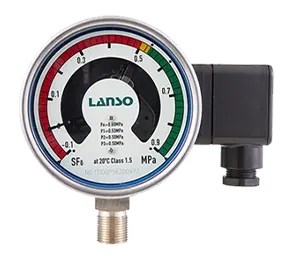Introduction to SF6 Gas
Sulfur hexafluoride (SF6) gas is a strong electronegative gas, with excellent insulation properties and arc extinguishing performance. It is widely used in electrical equipment in power grids, such as switchgear, transformers, and transmission pipelines, as an insulating medium. Therefore, the state of SF6 gas is a key parameter for evaluating the operational status of equipment. To ensure the safe operation of equipment and the power grid, it is necessary to conduct regular, timely, and effective SF6 monitor in operating equipment.
The Importance of SF6 Monitor
In the power industry, sulfur hexafluoride (SF6) gas is an important medium, used as an arc-extinguishing and insulating gas in enclosed medium and high voltage switches. The excellent performance of SF6 gas enables economic and low-maintenance operation of the devices, saving up to 90% of space compared to conventional equipment.
Under normal conditions, SF6 gas is non-toxic to humans. However, under the influence of high voltage arcs, SF6 gas partially decomposes, and its decomposition products are often highly toxic. Even in trace amounts, they can be lethal.
When indoor switches using SF6 gas as an insulating and arc-extinguishing medium leak during operation, the leaked SF6 gas and its decomposition products tend to accumulate in the lower space of the room, causing localized hypoxia and toxicity. This poses a serious risk to the life safety of personnel entering the room. Therefore, it is necessary to monitor SF6 gas in distribution rooms.
Specific Operations for SF6 Monitor
Through various smart sensor devices, real-time data monitoring of SF6 concentration, oxygen concentration, temperature, and humidity is conducted, providing highly stable and reliable SF6 monitoring information for the operation of each system and device in the distribution room.
When the concentration of SF6 gas and oxygen in the monitoring area is above or below the set alarm value, the system automatically emits audible and visual alarm signals, and provides necessary remote control and intelligent control.
Infrared sensors are installed in the monitoring area. When the system detects personnel entering, it automatically triggers an alarm signal and activates the ventilation system.
The system generates fault alarms for any faults occurring in the distribution room, notifying the relevant management personnel through various means to handle and resolve the issues promptly, providing early warnings for impending faults.
Promoting the automation and intelligence of distribution rooms, clarifying the rights and responsibilities of management personnel, improving the management level of the equipment room, saving operation management costs of the distribution station, and achieving the goal of short-term investment and long-term benefits.
Using the platform's comprehensive data statistics and analysis functions, provides reliable reference for distribution room managers and ample decision-making basis for the construction and improvement of distribution rooms.
Related Article for Reference
Role of SF6 Relay Calibrator
In electric power systems, SF6 relay serves as a key protection and control component, and plays an irreplaceable role in ensuring the safe operation of electrical equipment. Meanwhile, the SF6 relay ...
Thu 05 2024







